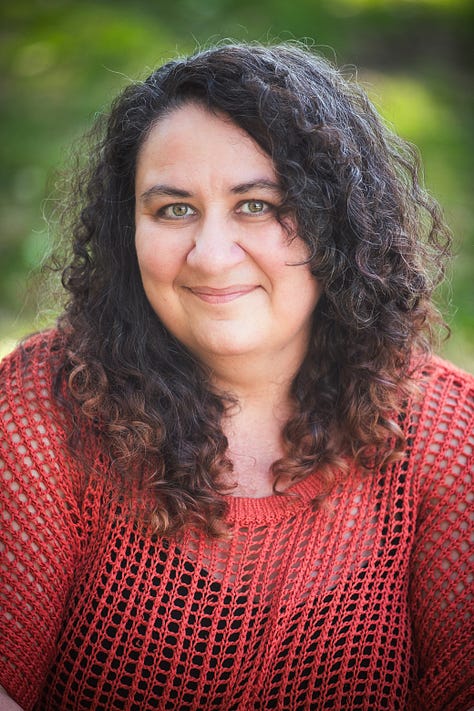Creating Space for Risk and Resonance: Weeks 2–5 in a Communication-Intensive Performance Course
This is the third installment in our C-I in Action series where we follow Dr. Naomi Bennett through her process of teaching a communication-intensive course. This week, we look at the importance of feedback and a willingness to shift plans to ensure successful course outcomes.
By the second week of Naomi’s Performance Composition course, her students were already diving into poetic communication through sensory observation and embodied performance. But it was in Weeks 2–5 that the real groundwork was laid—not just for their first solo pieces, but for how the class would approach communication and community all semester long.
Setting the Stage: Communicating Through the Senses
Week 2 opened with a sensory writing exercise. Naomi played George Winston’s instrumental piece “Tamarack Pines” and asked students to engage in a poetic free-write, drawing on all six senses: sight, hearing, smell, taste, touch, and proprioception. At first, the responses were thoughtful, but distant in a way. Students were more focused on describing or analyzing the music than expressing its impact. Perhaps years of school had taught them that description and analysis are more important or even more correct; it took more work to get them to convey their experience of it.
To push their thinking, Naomi introduced a revision step and asked students to rewrite the piece using each of the six senses to recreate the experience for the audience. Later that week, students began translating their sensory writing into movement. They chose three to five words or phrases from their sensory writing that evoked strong emotions, feeling, or sensory responses. They were given index cards - one for each word/phrase - and markers and asked to draw the “feeling” that each word/phrase evoked for them. From these drawings, students were asked to translate each index card image into a physical gesture, which was performed alongside spoken text, forming the foundation for how they would create their first solo performances.
“This was an exercise with source material I chose, the George Winston piece mentioned in the last post. Since students chose their own source material, it was meant to give them a method for translating a source text (music as the text) into poetic writing and physical performance.”
Even those initially hesitant about movement found creative ways to interpret and embody their ideas. The results were powerful—their writing came alive with movement, metaphor, and emotion.“What was surprising, even to me, was that several of the students created similar narratives to their sensory interpretation. Winston's "Tamarack Pines" is an instrumental piano piece with a suspenseful tone and repeated, staccato note that extends to the end. Several students created overcast, film-noir narratives with steady rain and hidden mystery, describing the moist air, smell of the rain, and sensory feeling of being in the world that listening to Winston's music formed in their imaginations.”
Feedback as a Communicative Practice
Weeks 4 and 5 shifted focus to workshopping student writing. The first major assignment required students to create a poetic performance text inspired by a non-verbal source—either a picture or photograph without text, or an instrumental piece—prompting them to respond using only their own language and interpretation. This communication skill was central to the course objectives and required instructional approaches.
Specifically, the principles of Communication-Intensive (C-I) teaching came into full view, particularly through the structure of the feedback process. Naomi introduced Liz Lerman’s Critical Response Process (CRP), a framework that centers the artist in the critique of their own work. Unlike traditional feedback models, CRP gives creators agency by allowing them to guide the critique based on what they want to understand about their piece. The four steps include:
Statements of Meaning – What resonated or stood out?
Artist’s Questions – What does the creator want to know about how the piece landed?
Neutral Questions – What can be asked without judgment?
Opinions (with permission) – What feedback is the artist ready to receive?
Teaching CRP required a thoughtful introduction and practice. The use of this approach was not always clear to Naomi.
Naomi shares, “The first time I encountered CRP, I was resistant because of the lack of direct feedback on what needs to be fixed. But the more I work with this process the more I see that CRP helps support the artist’s vision without imposing what the audience thinks the performance ‘should be.’”
The students also initially resisted elements of the process, particularly the need to ask for permission before offering opinions. But this resistance opened space for critical conversation. When a student’s poem about grief sparked dialogue about vulnerability and readiness, the class began to see how CRP was not just a structure, but a practice in communication ethics and community care.
Building a Trusting Classroom
Helping students to become better communicators isn’t just about assigning writing or scheduling presentations—it also requires creating conditions where students feel safe enough to take risks. In a performance course, those risks are often physical and emotional: standing in front of peers, sharing personal stories, trying new modes of expression.
Building trust doesn’t just happen; it is intentional. From the first day, expectations around participation, presence, and process are clearly laid out, not just as rules, but with explanations about why they matter. And when things go off course—as they did this semester due to hurricane-related disruptions—she made adjustments in real time.
By Week 5, it became clear that the pace was too fast for the kind of reflective feedback Naomi wanted, so the schedule was revised to create space for deeper reflection, even if it meant shifting plans for the rest of the semester.
“Communication isn’t something we can rush—especially not when we’re teaching students how to reflect, revise, and really listen to themselves and others.”
Do you have questions about the process of teaching this course as Communication-Intensive? Drop a comment below for Naomi and the CxC Team!
Moving Forward
Reflecting on weeks 2–5, it was clear that trust was already forming among students. Students were arriving to class with questions and ready to experiment. Slowly students were starting to see themselves as artists with something meaningful to communicate. This is actually a really important step when teaching communication skills.
As most teachers recognize, a course's goals and objectives are rarely so singular. In this class, the goal wasn’t just to teach performance or writing. It was to help students build communicative capacity through voice, movement, metaphor, and shared dialogue. What emerged was a classroom where communication felt alive, layered, and deeply human.



Read more from this C-I in Action series
Part 1: Meet Communication Studies Professor Dr. Naomi Bennett and learn a little about her Performance Composition C-I course
Part 2: Take a look at some of the initial planning and the first few weeks of the course
Part 3: Exploring the importance of feedback and a willingness to shift plans to ensure successful course outcomes
Part 4: Recognizing a need to change course to facilitate meaningful student engagement, and seeing the outcome of that revision to the plan
Part 5: Explore how scaffolding, trust, and feedback shaped the second half of the semester
Part 6: Students begin building confidence, critique, and connection by putting what they’ve learned into practice
Part 7: Students close the semester balancing challenge and care in the second round of personal narratives


